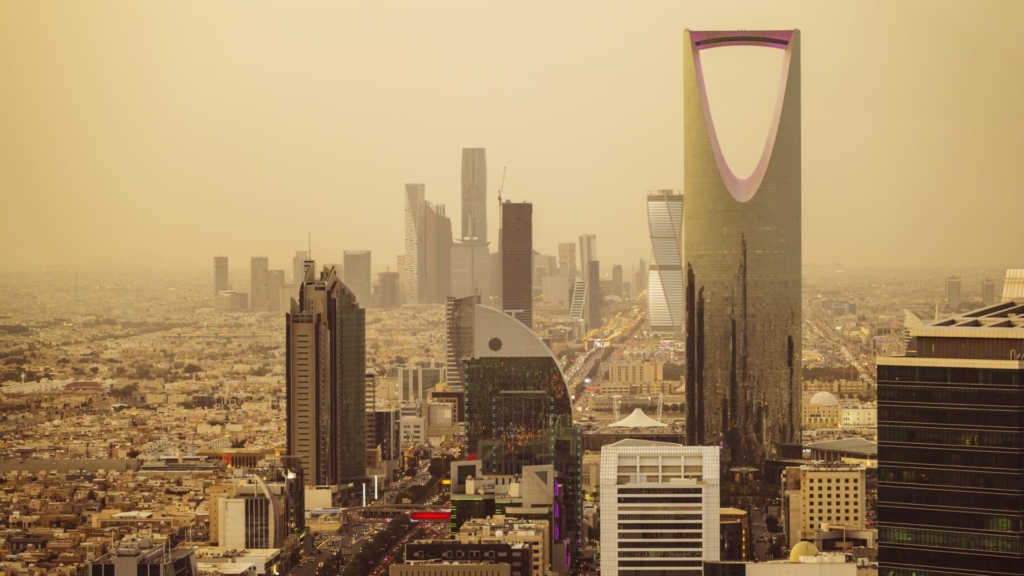Crude oil prices are experiencing a significant decline, a situation exacerbated by diminishing demand, fears of a global trade conflict, and an increase in crude supply. This downturn could potentially lead to a drastic increase in Saudi Arabia’s budget deficit, according to analysis from Goldman Sachs.
The investment bank’s projections indicate that the kingdom is under substantial pressure to revise its extensive spending framework and fiscal strategies.
Farouk Soussa, a Goldman Sachs economist focused on the Middle East and North Africa, addressed the rising fiscal concerns during an interview with Finance Newso’s Access Middle East. He emphasized that, “The deficits on the fiscal side that we’re likely to see in the GCC [Gulf Cooperation Council] countries, especially big countries like Saudi Arabia, are going to be pretty significant.”
The increase in government spending has been fueled by Vision 2030, an ambitious initiative aimed at diversifying Saudi Arabia’s economy and reducing its dependency on oil revenue. A key component of this strategy is Neom, an expansive yet largely uninhabited mega-region vying for transformation in a desert area roughly equivalent to the size of Massachusetts.
Neom’s development plans foresee hyper-advanced projects with cost estimates reaching as high as $1.5 trillion. Additionally, the kingdom will be hosting both the 2034 World Cup and the 2030 World Expo, events recognized for their financial demands.
According to estimates by the International Monetary Fund, Saudi Arabia requires oil prices to stay above $90 per barrel to achieve a balanced budget. Goldman Sachs recently revised its forecast for Brent crude prices in 2025 to $62 per barrel, down from $69, a shift predicted to vastly increase the kingdom’s projected 2024 budget deficit from $30.8 billion to potentially between $70 billion and $75 billion.
“In Saudi Arabia, we estimate that we’re probably going to see the deficit go up from around $30 to $35 billion to around $70 to $75 billion, if oil prices stayed around $62 this year,” noted Soussa.
This mounting deficit may lead to increased borrowing and possible austerity measures, such as cuts in government spending and asset sales. The repercussions could ripple into both domestic financial conditions and broader international markets.
While Saudi Arabia maintains a manageable debt-to-GDP ratio of just under 30% as of December 2024, contrasting sharply with the 124% and 110.6% ratios seen in the U.S. and France, respectively, issuing $75 billion in additional debt may pose challenges for the market. Soussa remarked, “That debt to GDP ratio, while comforting, doesn’t mean that the Saudis can issue as much debt as they like … they do have to look at other remedies.”
These alternatives may involve curtailing capital expenditures, increasing taxes, or divesting additional state-owned enterprises like Saudi Aramco and Sabic. Economic observers predict that some projects within Neom could be reconsidered under these new fiscal pressures.
Saudi Arabia currently holds an A/A-1 credit rating with a positive outlook from S&P Global Ratings, as well as an A+ rating with a stable outlook from Fitch. Coupled with substantial foreign currency reserves of $410.2 billion as of January, the kingdom finds itself in a relatively stable position to manage a budget deficit.
China’s continued reforms to attract and mitigate risks in foreign investment, paired with measures that diversify revenue sources, have been noted positively by S&P Global. “This will continue to improve Saudi Arabia’s economic resilience and wealth,” the ratings agency stated.
Soussa concluded, “The Saudis have lots of options, the mix of all of these is very difficult to pre-judge, but certainly we’re not looking at some sort of crisis. It’s just a question of which options they go for in order to deal with the challenges that they’re facing.”
Currently, Brent crude is trading at approximately $63.58 per barrel, a drop of about 14% since the start of the year, as of Thursday morning in London.


























